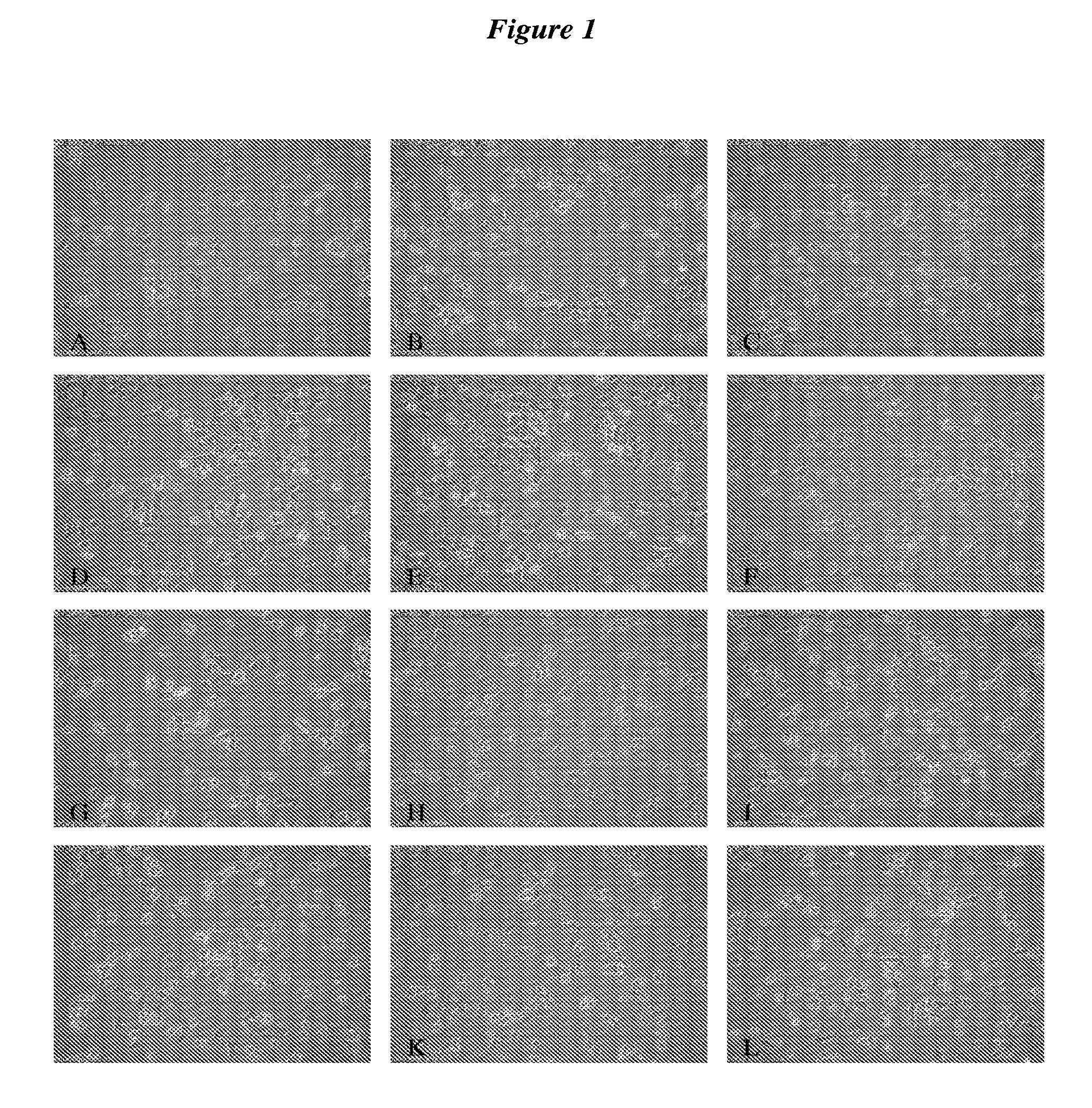Methods for treatment of a sarcoma using an epimetabolic shifter (coenzyme q10)
a technology of epimetabolic shifter and sarcoma, which is applied in the direction of biological testing, drug composition, biological material analysis, etc., can solve the problems of less than 25% of patients with metastatic disease surviving beyond 5 years, serious threat to modern society, and the outcome of ewing patients with metastatic disease remains dir
- Summary
- Abstract
- Description
- Claims
- Application Information
AI Technical Summary
Problems solved by technology
Method used
Image
Examples
example 1
Identification of CoQ10 as a MIM
[0430]In order to evaluate CoQ10 as a potential MIM, CoQ10 in oxidized form was exogenously added to a panel of cell lines, including both cancer cell lines and normal control cell lines, and the changes induced to the cellular microenvironment profile for each cell line in the panel were assessed. Changes to cell morphology / physiology, and to cell composition, including both mRNA and protein levels, were evaluated and compared for the diseased cells as compared to normal cells. The results of these experiments identified CoQ10 and, in particular, the oxidized form of CoQ10, as a MIM.
[0431]In a first set of experiments, changes to cell morphology / physiology were evaluated by examining the sensitivity and apoptotic response of cells to CoQ10. A panel of skin cell lines including a control cell lines (primary culture of keratinocytes and melanocytes) and several skin cancers cell lines (SK-MEL-28, a non-metastatic skin melanoma; SK-MEL-2, a metastatic s...
example 2
Methods for Identifying Relevant Processes and Biomarkers for Sarcomas
[0435]From the cell based assays in which cell lines, e.g., sarcoma cell lines, were treated with a molecule of interest, the differences in treated vs non-treated cells is evaluated by mRNA arrays, protein antibody arrays, and 2D gel electrophoresis. The proteins identified from comparative sample analysis to be modulated by the MIM or Epi-shifter, e.g., CoQ10, are evaluated from a Systems Biology perspective with pathway analysis (Ingenuity IPA software) and a review of the known literature. Proteins identified as potential therapeutic or biomarker targets are submitted to confirmatory assays such as Western blot analysis, siRNA knock-down, or recombinant protein production and characterization methods.
example 3
Relative Sensitivities of Oncogenic and Normal Cells to Coenzyme Q10
[0436]The effects of Coenzyme Q10 treatment on a variety of oncogenic and normal cell lines were examined and compared. The sensitivity of cells to Coenzyme Q10 was assessed by monitoring induction of apoptosis. CoQ10 treatment of cells was carried out as described in detail below in the Materials and Methods. Induction of apoptosis was assessed in the treated cells by monitoring indicators of early apoptosis (e.g., Bcl-2 expression, caspase activation and by using annexin V assays) as described below. From these studies, the minimal CoQ10 dosage, e.g., concentration of CoQ10 and time of treatment, required to induce apoptosis in the panel of cell lines was determined.
[0437]In an unexpected and surprising result, the data demonstrated that efficacy of Coenzyme Q10 treatment was greater in cell types that exhibited increased oncogenicity and / or greater metastatic potential, i.e., cell types that were derived from mor...
PUM
| Property | Measurement | Unit |
|---|---|---|
| viscosity | aaaaa | aaaaa |
| volume | aaaaa | aaaaa |
| pH | aaaaa | aaaaa |
Abstract
Description
Claims
Application Information
 Login to View More
Login to View More - R&D
- Intellectual Property
- Life Sciences
- Materials
- Tech Scout
- Unparalleled Data Quality
- Higher Quality Content
- 60% Fewer Hallucinations
Browse by: Latest US Patents, China's latest patents, Technical Efficacy Thesaurus, Application Domain, Technology Topic, Popular Technical Reports.
© 2025 PatSnap. All rights reserved.Legal|Privacy policy|Modern Slavery Act Transparency Statement|Sitemap|About US| Contact US: help@patsnap.com



